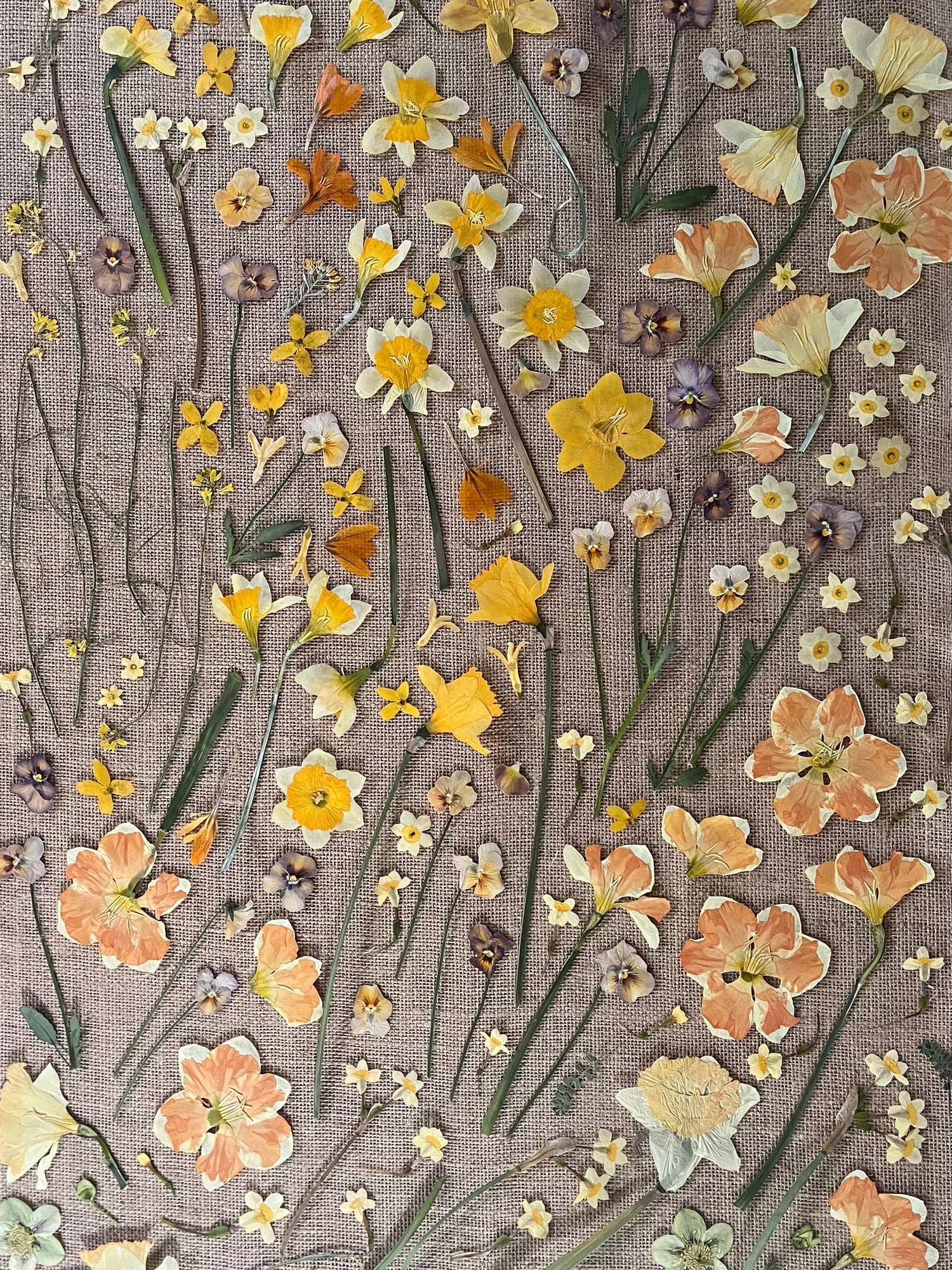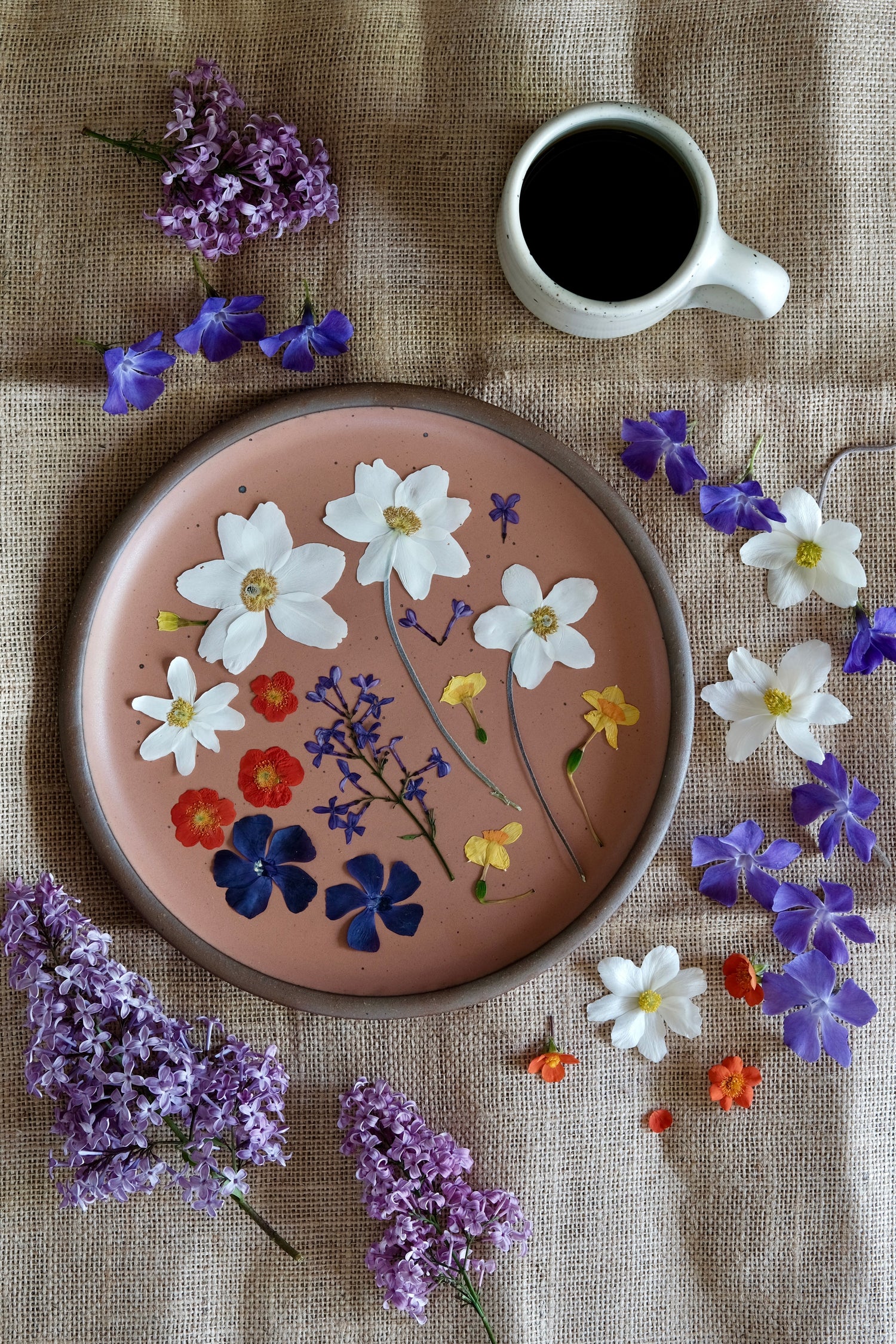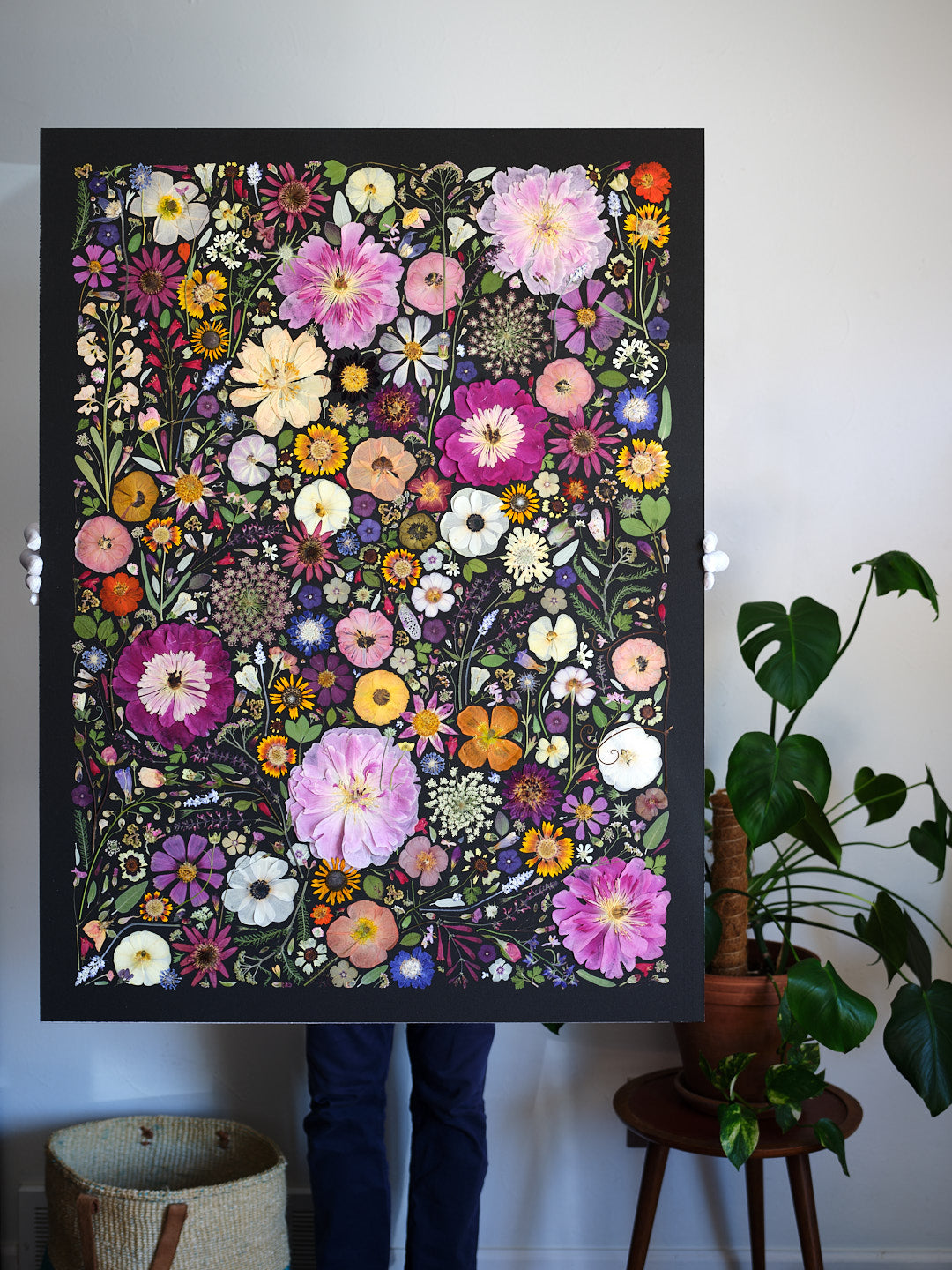
LILACS
Lilacs are an enjoyable flower to press that do not require too much fuss after the initial thinning. They press super well, dry relatively quickly in the press, and do not have browning issues from excess moisture, IF THINNED properly. If you do not thin lilacs and press them as is, they will look like a big blob and you will probably run into browning issues from too many layers of flowers being stacked on top of one another.
I find it's best to press lilacs BEFORE all of the flowers on the stem have opened up. If you wait to pick them and all of the flowers have already opened, then a lot of the flowers tend to fall off while you're trying to prepare them for pressing, which can be frustrating. Thinning flowers to press is something we talk about more in our How to Press Flowers Course.
As long as you take the proper steps of thinning lilacs before pressing, your lilacs should be a hassle-free and enjoyable flower to press. Properly thinning them does take a bit of meditative patience.

PERIWINKLE
Periwinkle behaves similarly to wild blue flax once in the press (blog post on wild blue flax to follow). Periwinkle is an easy flower to press, but some precautions should be taken while you are changing out the paper in the press. I do like to snip off the protruding part on the back of the flower to get a neater press.
During the first few days of changing paper, when the flowers are still holding onto a lot of their moisture, do not disturb the flowers. Leave the top and bottom sheet that the flowers are sandwiched between, intact. If you try to lift them from the paper, or lift the paper from them, the flowers will curl, like one of those red fortune teller miracle fish. This can be EXTREMELY frustrating because then the flowers become virtually impossible to flatten back out. Most of the time, you'll end up with creases in the flowers.
During the first few days of changing paper, leave the top and the bottom sheets of paper that the periwinkle flowers are sandwiched between, alone. Only change out the paper NOT directly touching the flowers. After 2 to 3 days of changing paper, the periwinkle flowers will become dry enough and it will be safe to remove the sheets of paper they are in direct contact with. You will know when the flowers are dry enough because they will no longer stick to the sheets of paper and will easily release themselves from the paper.

Geum + Anemone
Geum and Anemone are very straight forward to press in the same way that Cosmos, pansies, or violas are. I like to keep some on the stem and press some off of the stem as to have a variety for presentation purposes.
However, I do find that if you close the press too tightly during the first few days of pressing anemones, you'll force out too much moisture, too fast and bruise them, so little brown spots may appear. I do advise closing the press more softly during these first few days of pressing. However if you don't close the press tightly enough, the flowers won't press perfectly flat and will get a wrinkled appearance, similar to what can happen when microwaving flowers. The more you press flowers, the more you'll get a feel for how tightly to close a press.

Alright, off to plant some trees and put this woodchip mulch to use. We have a lot of Ash trees on our property so we are trying to diversity in preparation for the emerald ash borer to arrive on our property and kill our trees. It's a sad thought.





